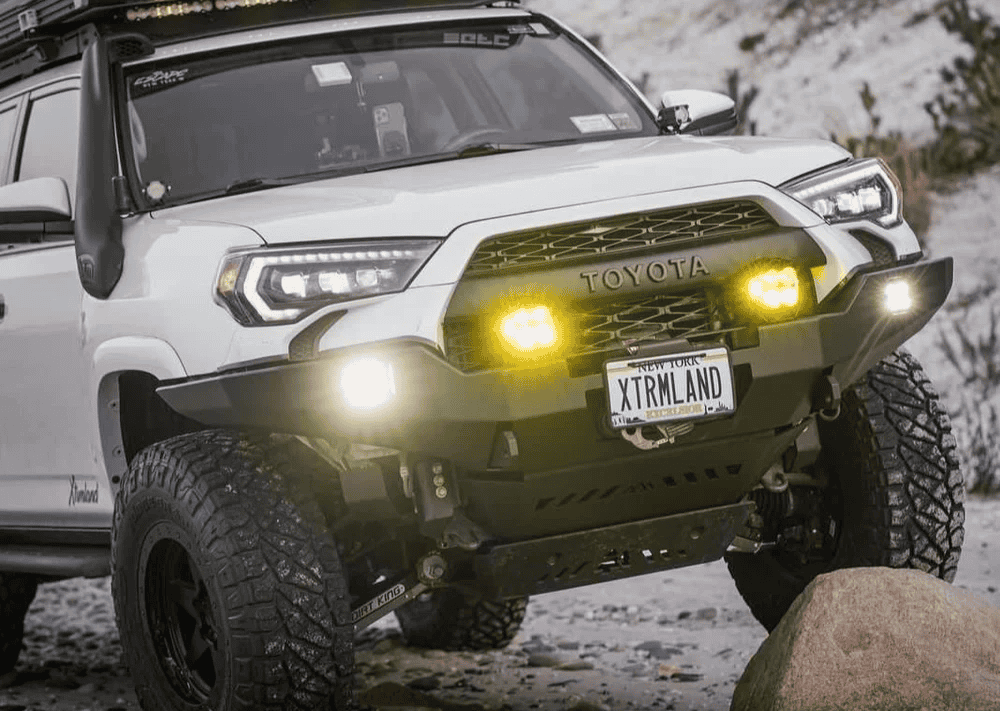Overland Vehicles

A propane heater for overland rig travel has one job: turn fuel into safe, dry heat inside a compact space. Start with sizing. Estimate your rig’s interior volume, note how much glass you have, and factor in insulation quality. Cold climate travel, frequent door opens, and tall roof cavities all increase the BTU requirement. Aim for a unit that can sustain your baseline needs at low to mid output rather than running at max all night.
Combustion style matters. A sealed combustion or direct vent unit pulls intake air from outside, combusts propane in a closed chamber, then exhausts outside through a dedicated flue. This design keeps fumes and much of the moisture out of the living space. Unvented portable heaters are not intended for sleeping quarters. They add water vapor, require constant ventilation, and raise carbon monoxide risk.
Expect altitude effects. Propane needs oxygen. Above roughly five thousand feet, many burners run rich, produce soot, and drop efficiency. Some appliances offer altitude kits or are calibrated for thinner air. If your routes cross high passes, choose a heater rated for elevation and keep the flue path short, straight, and properly sized to maintain draft.
Thermostat control improves comfort and fuel use. Look for multi speed fans, staged output, or a digital thermostat with night setback. Quieter circulation matters on long nights, so check decibel ratings or user reports. Also consider cabin airflow: return air should be low and unobstructed, with supply air directed to sleeping zones and the footwell.
Venting is non negotiable. A sealed propane heater needs a dedicated intake and exhaust through the wall or floor with the manufacturer’s clearances. Maintain minimum distances from windows, doors, and fuel inlets. Use marine grade sealants and clamps so vibration does not loosen joints. A short, rigid exhaust run with a rain cap reduces condensation and backdraft risk.
Propane storage must be secure. Use DOT approved cylinders or ASME tanks mounted upright, isolated from the cabin, and restrained against movement. Exterior mounts are common; interior lockers must be vapor tight with a bottom drain to the outside because propane is heavier than air. A two stage regulator sized to your total BTU load and hose length keeps pressure stable in the cold.
Every system needs detectors and shutoffs. Install carbon monoxide and propane leak detectors at proper heights, test them often, and replace sensors on schedule. A manual shutoff valve at the appliance and another at the tank is standard. Use bubble tests or an electronic sniffer after every service. Never rely on smell alone, since odorant perception varies in cold weather.
Moisture control separates a comfortable cabin from a damp one. Even sealed heaters leave some humidity from occupants and cooking. Cross ventilation, a crack at a window with a rain guard, and insulation that manages vapor drive will keep condensation from windows and metal ribs. Dry gear storage, drain mats, and a fan timer help reset the cabin after wet entries.
Real world comfort is about more than BTUs. Heat distribution is key. Place the heater low and central when possible, so warm air can rise and wash the space. Direct some airflow toward the bed area and the entry step to keep boots and door seals dry. A small circulation fan can eliminate cold pockets behind cabinets.
Fuel planning keeps you moving. As a rule of thumb, a mid size propane heater sipping at a low duty cycle can run for multiple nights on a standard cylinder, but heavy wind, poor insulation, and frequent door use will increase consumption. Cold weather also drops tank pressure. A larger vaporization surface or warmed locker keeps output steady during deep cold.
Compare alternatives with clear eyes. Diesel and gasoline fired air heaters share sealed combustion and altitude kit options, and they tie into vehicle fuel. Propane remains attractive for rigs that already cook on gas or need silent, low odor heat with clean maintenance. The right answer often blends systems: propane for primary heat and cooking, plus a small electric source for shoulder seasons when shore power is available.
Installation quality writes the ending to this story. Clean routing, solid terminations, and proper clearances protect your family and your rig. If you want expert help integrating a propane heater into a full overland cabin layout, OZK Customs builds sealed, code conscious systems with testing that mirrors field conditions. Explore our Overland rigs to see how heat integrates with power, water, and storage. If you are planning a full utility package, our Custom overland upfit process covers system design, safe tank mounting, and airflow tuning around your exact layout. Want to understand our approach before you commit? Start here: Why choose OZK Customs.
Warmth you can count on starts with a thoughtful plan. Share your travel patterns, typical elevations, and how you use the space, and our Fayetteville team will map a propane heater for overland rig travel that lights fast, breathes clean, and stays quiet through the night. Then we install, test, and hand you the keys to a cabin that feels like home.
Warm nights start with a smarter build. Tell us how you travel, and our team will spec, install, and test a complete propane heat system that performs at altitude and in deep cold. Start your custom plan now.
ADDRESS:
6159 E Huntsville Rd, Fayetteville, AR 72701
PHONE:
(479) 326-9200
EMAIL:
info@ozkvans.com